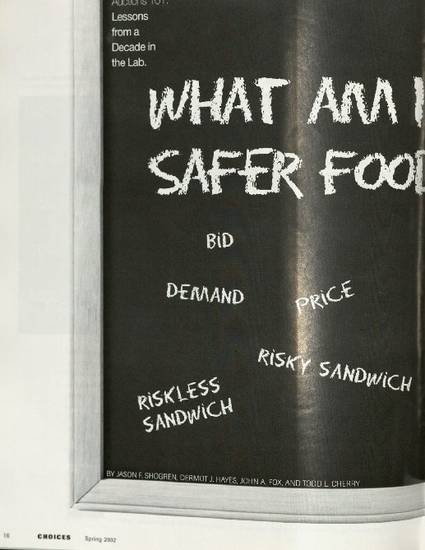
Over a decade ago, we became interested in how consumers react to food safety and new food technologies. This led to a series of laboratory experiments that asked people to reveal their preferences in an auction environment in which they spent real money and consumed the actual food products. The auction environment is a surrogate market conducted under laboratory conditions of control and repetition. People came to a laboratory setting (a university taste-testing lab), and were asked to bid in an auction offering foods with different risks of foodborne illness. The auction was specifically designed to give people an incentive to tell the truth about their preferences for safer food.
The lab/auction model forced people to make real economic commitments, albeit in a setting more stylized than a retail store.
These experimental procedures have helped investigators learn things about consumer behavior toward food safety that would have been impossible to discover using any other procedure. This article describes some of the findings from the program, along with what insights can or cannot be learned in a laboratory environment.
Available at: http://works.bepress.com/dermot_hayes/175/

This is an article from Choices, 2002; 16-21. Posted with permission.